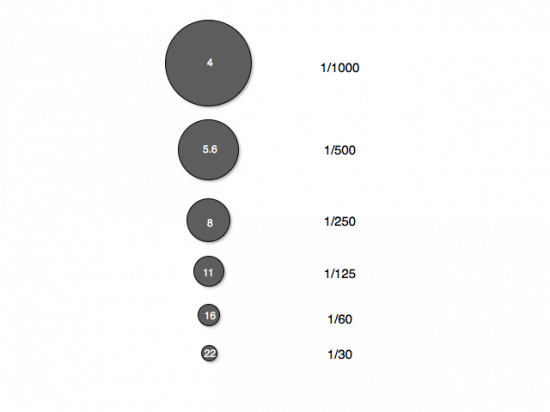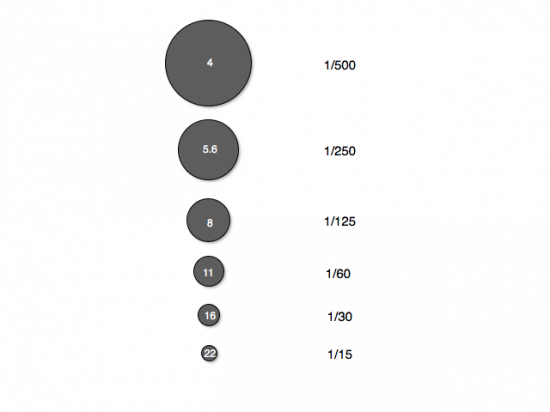The Relationship Between Aperture, Shutter Speed & ISO
Aperture, shutter speed and ISO combine to control how bright or dark the image is (the exposure).
Using different combinations of aperture, shutter speed and ISO can achieve the same exposure. A larger aperture allows more light to hit the sensor and therefore the shutter speed can be made faster to compensate. These examples explain in more detail.

Each of the setting combinations above would achieve the same exposure.
In the above example F8 combined with a shutter speed of 1/250s gives the correct exposure. If we halve the size of the aperture to F11 we halve the amount of light entering through the lens so we need to double the amount of time that the shutter is open to 1/125s to let in twice as much light.
[thrive_leads id=’16373′]
Doubling the size of the aperture from F8 to F5.6 will allow twice as much light to hit the sensor and therefore we only need our shutter to be open for half the amount of time; so f8 and 1/250s gives the same exposure as f5.6 and 1/500s.

If the first set of exposure combinations were created using an ISO of 200, then the shutter speed and aperture combinations above would be the result of changing the ISO to 100. As you can see the shutter speed in each case has been made twice as long (1/500s vs 1/1000s at f4). This is because ISO100 is half as sensitive to light compared to ISO200 and we therefore need twice as much light to hit the sensor, which can be achieved by using a shutter speed that is twice as long or by doubling the size of the aperture.
A common term in photography is stops.
One stop means a halving or doubling of the amount of light entering the camera.
e.g. F8 gives one stop less expspoure than F11, and 1/100s gives one stop more exposure that 1/200s
Two stops means doubling twice, or halving twice, the amount of light.
e.g. ISO100 give two stops less exposure than ISO400 (400 is halved twice, once to 200, then halved again to 100 = 2 stops).
